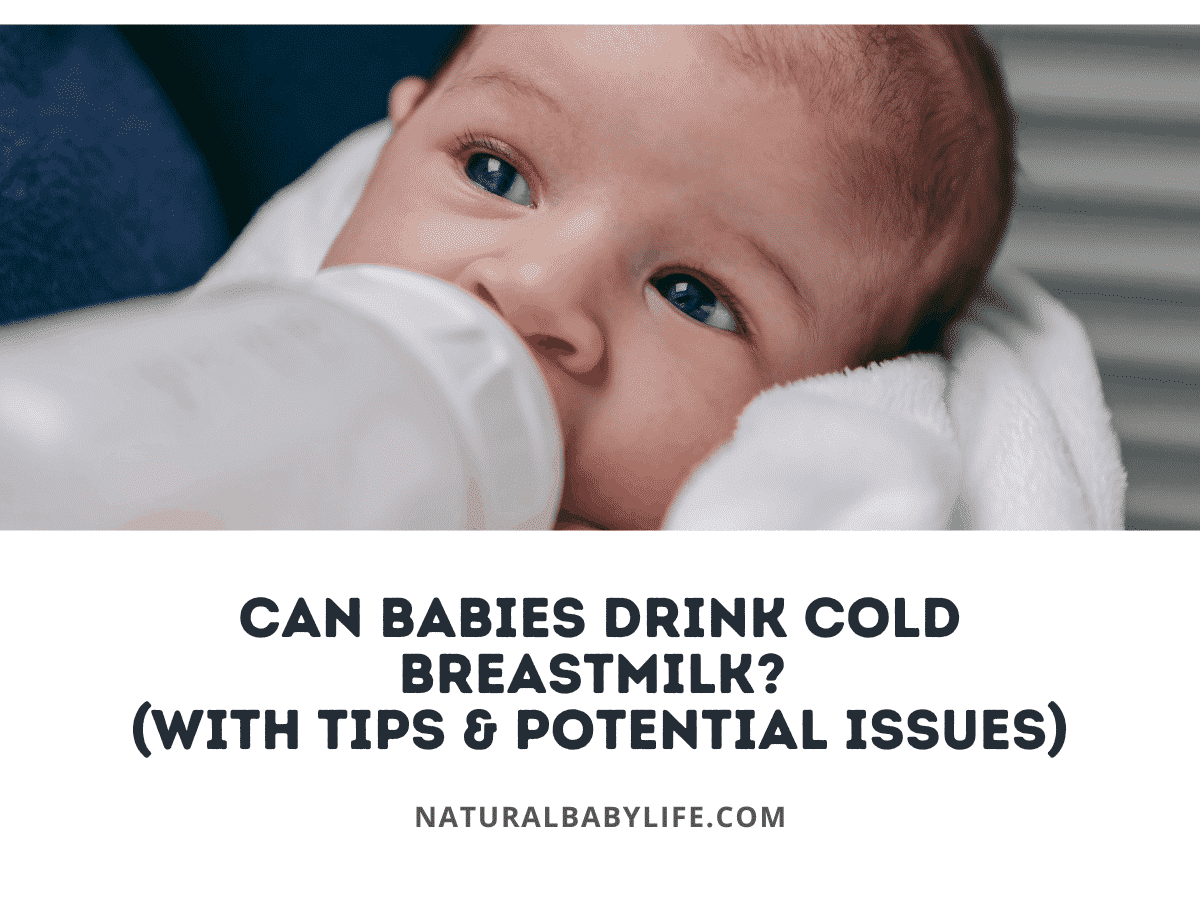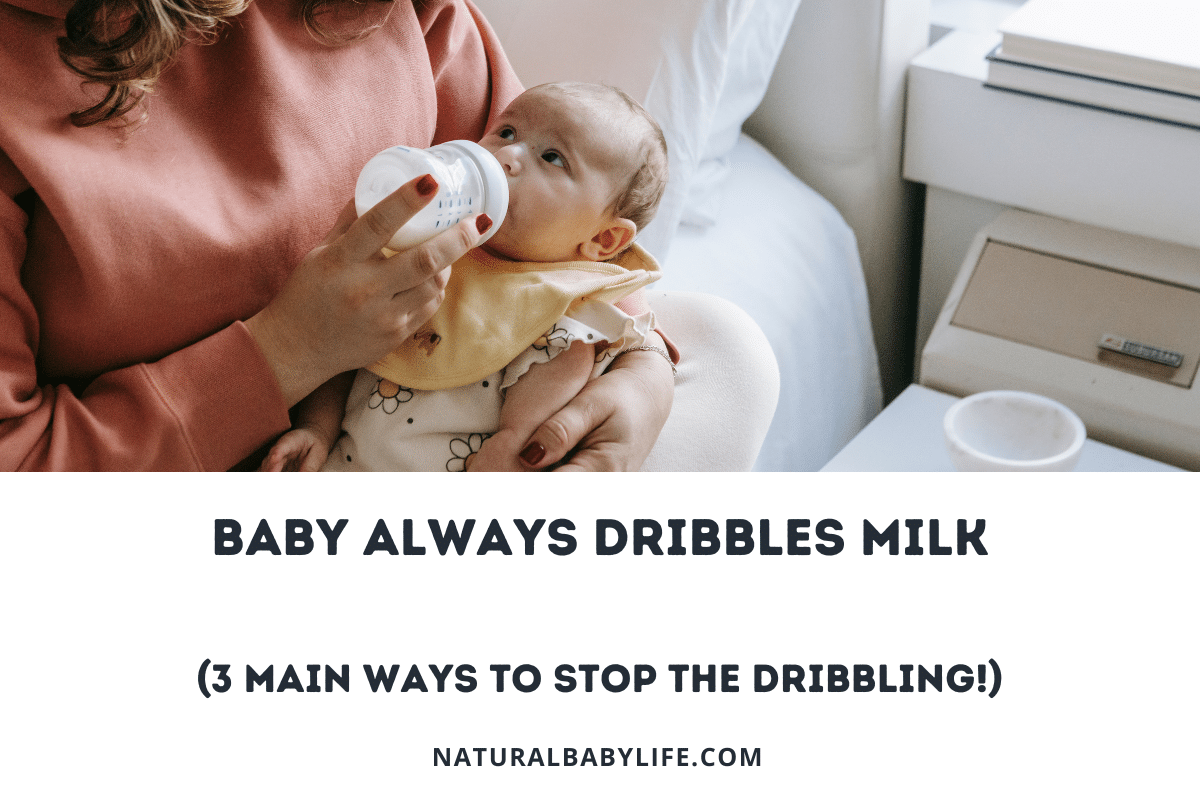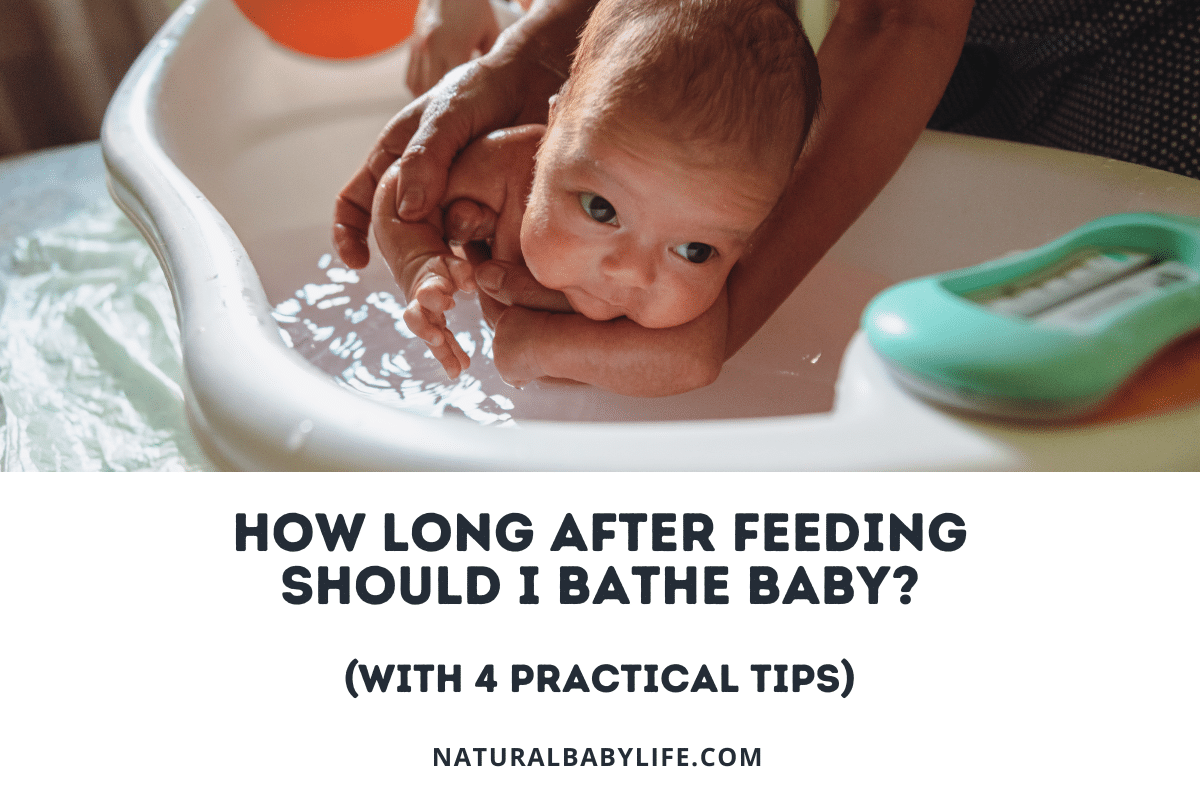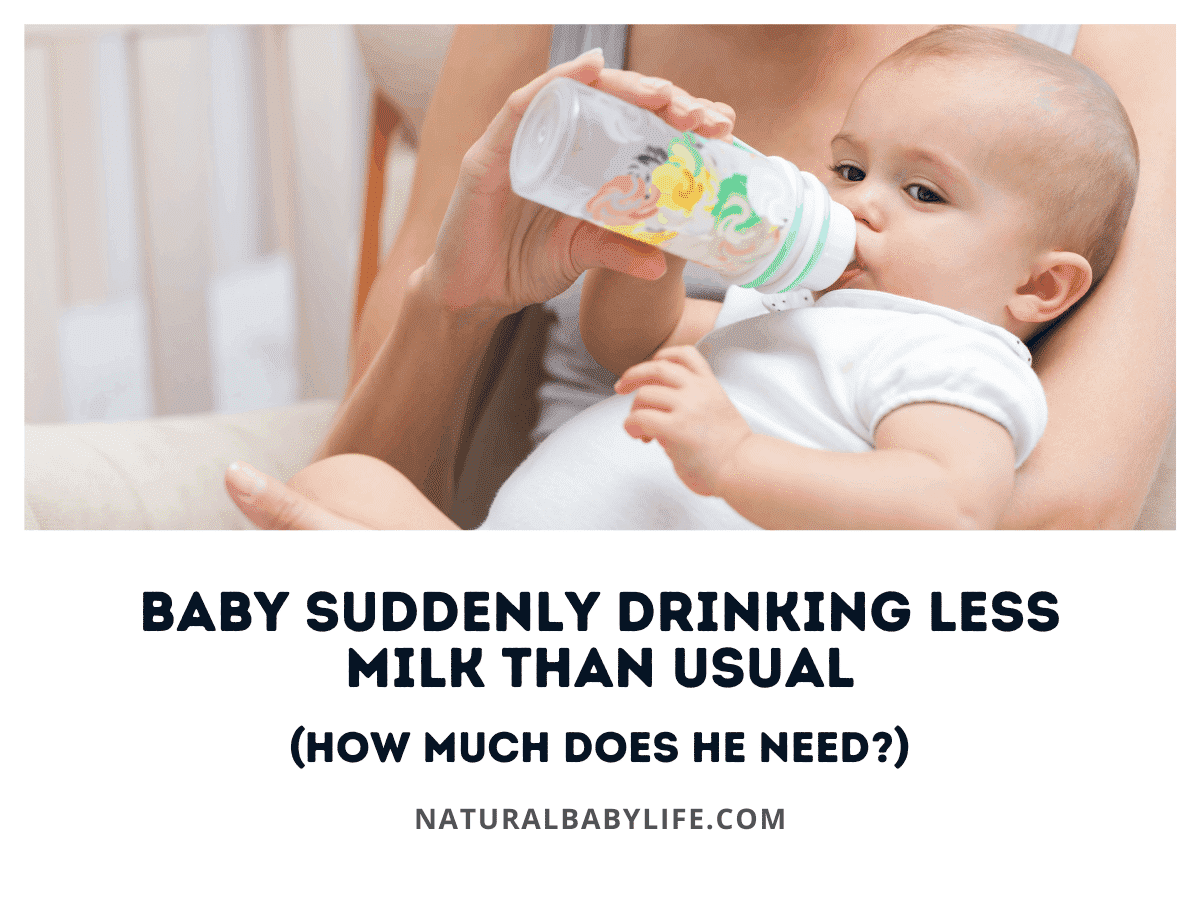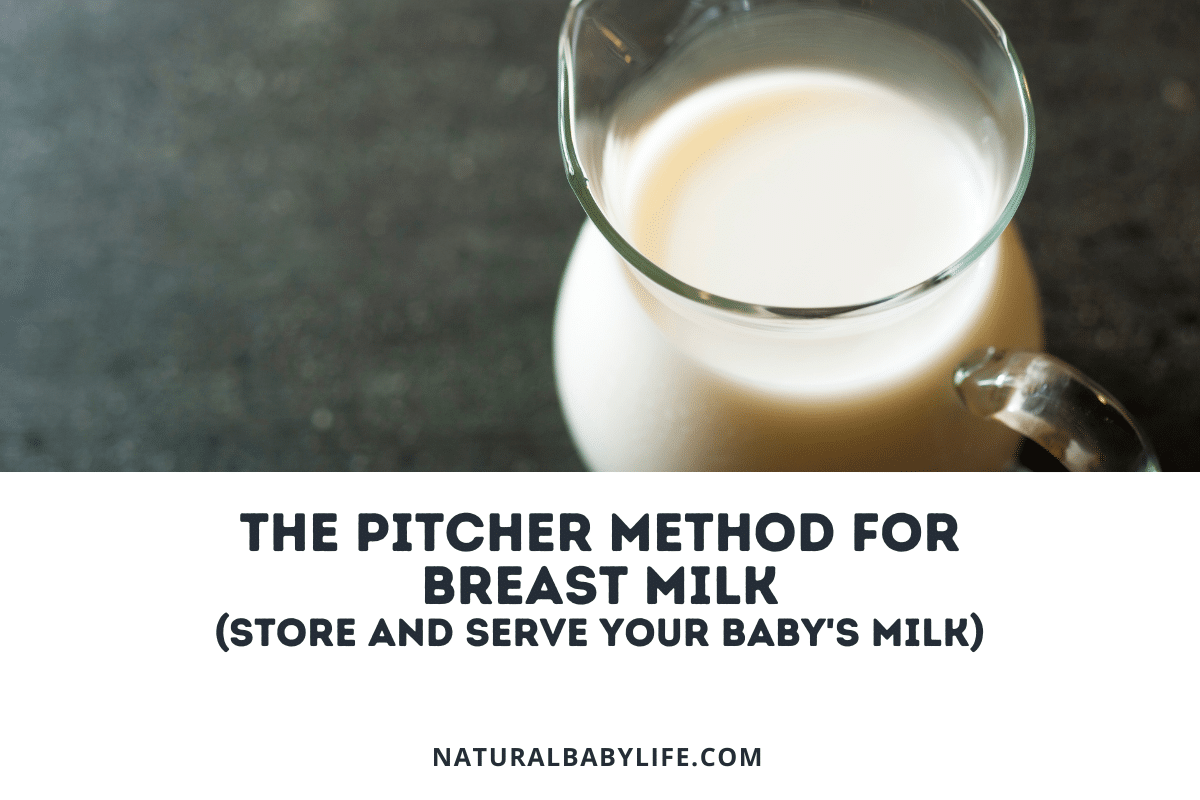Breastfeeding mothers on the go often find that feeding their baby cold breastmilk that they have previously pumped and stored is a convenient option but they may wonder if there are any problems with it.
Babies can drink cold breastmilk and other milk that has been properly stored in the refrigerator or freezer but they may prefer it warm as it comes from the breast at body temperature. Shaking or warming breastmilk slightly will help avoid separation. Parents should also watch out for cold milk causing an upset stomach or gas.
Even though it’s safe, drinking cold breastmilk means that you will need to learn how to properly store your milk after pumping and we’ll need to dive into potential issues that could arise so you know what to look out for with your baby. Finally, I’ll give you a few tips to make the process easier!
Table of Contents
Most babies can drink cold breastmilk without problems
The good news is that feeding your baby cold breast milk isn’t likely to cause any issues and it is certainly not a reason to give up breastfeeding early. For whatever reason, many mothers can feel like just because they are pumping and storing their milk somehow lessens the benefits of breastfeeding in the first place or means that they are failing.
This couldn’t be further from the truth.
Feeding your baby cold breastmilk still provides nearly all of the many benefits of breastfeeding but gives you the added flexibility of sending your milk to daycare or leaving it at home for your spouse or babysitter to feed to your baby. While most newborns and infants will probably prefer their milk warm because that’s how they are used to getting it from your breast there are ways to get them used to drinking it cold as well.
In fact, some research has shown that 67% of babies served cold breastmilk in the NICU accepted the milk with no issues. Remember that NICU babies are often premature or otherwise in poor health. Medical staff were also not able to detect any differences in growth or other indicators among the babies that had cold breastmilk compared to those drinking warm breastmilk.
Refrigerated or frozen breastmilk is still better than formula
If you are still worried about cold breastmilk losing nutrients or other benefits you should know that refrigerated or frozen breastmilk is still better than formula. For example, according to a study from the Archives of disease in childhood – Fetal and neonatal edition, there is still dramatically more antioxidant levels in refrigerated or frozen breastmilk than formula.
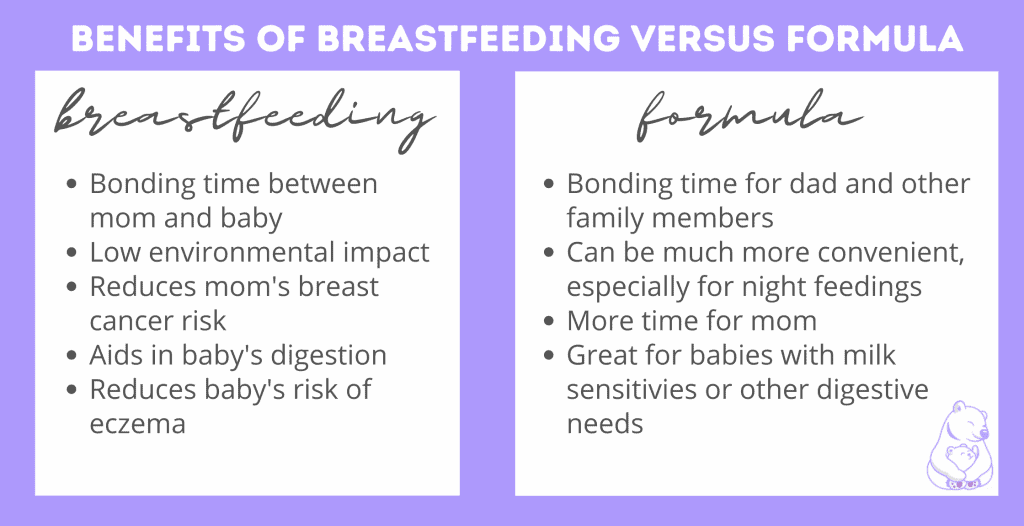
For best results, here are their recommendations for serving cold breastmilk:
- Fresh is best – feed your cold breastmilk to baby within 48 hours of pumping
- Avoid freezing milk that you will feed to your baby in most cases – freezing lessens the benefits of breastmilk more than refrigerating
- Freezing some breast milk is a good idea for times when a mother’s supply is low
To help get your baby acclimated with colder milk you can store some in the fridge and either mix it in with freshly pumped milk or warm it in a bottle under the faucet for a couple of minutes to knock the chill off. Once you find a temperature that your baby can enjoy, slowly lower the temperature of it each day so you don’t just suddenly shock her with ice-cold milk!
Don’t ever warm your milk in the microwave because it can cause hot spots due to uneven heating. These can burn your baby!
How to refrigerate or freeze breastmilk properly before feeding
Whether you are planning on storing your breastmilk to serve to your baby cold or you will warm it up you will still need to know the best practices to keep things safe. According to the La Leche League, there are a few simple things that you need to know about storing breastmilk:
- Be sure to date any stored milk to keep track of it. All milk in the fridge should be used first in, first out. Similarly, you should also use the oldest milk in the freezer first.
- Store the milk in small amounts (2-4 ounces) to reduce waste – you can always open up another container.
- Only combine milk from different pumping sessions if they have both been chilled already.
As far as how long you can keep breastmilk after pumping, it will depend on how you store it. Here are some basic time guidelines according to the temperature of storage:
- Room temperature – 4 hours is best but 6-8 is safe with lower temperatures (60 degrees). Keep the milk covered at all times.
- Cooler or insulated bag – About 24 hours if the cooler temperature is under 40 degrees F. Keep the ice in contact with the milk and avoid opening the cooler.
- Refrigerator – 4 days is best but 5 is okay. Store the milk far back in the fridge to minimize changes in temperature.
- Mini-fridge freezer – 2 weeks is best. Constant door opening causes temperature changes.
- Freezer compartment – 3-6 months is best. Always store milk in the back of the freezer to avoid fluctuations in temperature.
- Deep freezer – 6-12 months is best. It’s likely safe to leave it here longer but fats and other nutrients will start to break down at this point.
If you aren’t sure what you should be storing your breastmilk in then I recommend finding a good storage bag meant for breastmilk. We’ve had great success with these bags over the years and they are awesome because they are pretty cheap, extremely durable, there is a place to write the date so you don’t forget. You can check them out here (and also read the latest reviews on Amazon) Oh, and the inner lining is also made of baby-safe plastic number 4 so you won’t have to worry about contamination.
Potential benefits of feeding your baby cold breastmilk
Although it might sound weird to feed your baby cold breastmilk there are a few potential benefits to consider. Namely, you avoid heating up the breastmilk
As it turns out, heating up breastmilk too much can actually destroy key nutrients inside the milk pretty quickly which would negate all of the wonderful health benefits it would normally offer. It’s also a big waste of time for the person pumping all of that liquid gold!
Bottle warmers, hot water baths, and other typical ways that parents heat up breastmilk can all bring it up to above 80°C (176°F) which is when you start to lose those vital nutrients in breastmilk.
If you do warm up your breastmilk, always be sure to use a kitchen thermometer to check the temperature and pull it from the heat before it gets too hot! Since you can’t serve it that hot to a baby anyway, you’re also just wasting time waiting for it to cool back down.
Another issue with warmed breastmilk is that once you’ve warmed it up once you either have to use it up or toss it away after a couple of hours. Losing even a little breastmilk this way can be significant for a mother struggling to keep up with her pumping.
All in all, don’t feel bad if you are in a position where you need to serve your baby cold breastmilk – it’s perfectly fine!
Common issues with feeding a baby cold breastmilk
Despite the fact that it is completely safe to feed your baby cold breastmilk there are still a few concerns that you need to be aware of so that you can watch for them. Don’t worry too much though because these problems won’t affect every baby and it is likely that you won’t notice any difference between cold milk and milk straight from the breast.
I’m going to run through these separately so you’ll have a good idea of how to tackle each one.
Cold breastmilk separates
Unlike the cow’s milk that we buy in the grocery store, natural breastmilk hasn’t been processed or undergone any kind of treatment. It’s completely raw. That means that the milk will naturally separate into a milk layer and a cream top when it is refrigerated.
Importantly, we don’t want to lose this layer of fat because it’s extremely important for the overall health and development of your baby. Healthy fats are necessary for proper brain development, absorption of certain vitamins, and provides a lot of calories to help your baby grow.
To combat this separation you can simply shake your bags or bottles of milk up before you serve it. If the fat layer refuses to mix back in you might need to warm the milk up at least a little bit until the layers combine.
Baby refuses to drink cold breastmilk
Like I mentioned before, most babies just plain prefer to drink their milk warm just like it comes from mommy’s breast. It’s a completely natural preference and it’s the way that babies have been drinking breastmilk for thousands of years.
This means that your baby will likely freak when you give him cold milk for the first time because he has never experienced anything like it before. Even though the taste should be similar, the sensation will be completely different and might signal that it isn’t even food at all. If your baby refuses to drink the milk cold or simply drinks less than he needs then you should help him get used to it by mixing in fresh milk or warming the stored milk a little.
Cold breast milk upsets baby’s stomach
If you read through parenting or breastfeeding forums you will likely find that some mothers complain that cold breastmilk upsets their baby’s stomach or makes them fussy while they eat. Others complain that it causes constipation.
I wasn’t able to find any literature to back up these claims but their experience is their own. If you have problems with this then you will probably need to start warming up your milk beforehand.
Cold breast milk gives baby gas
Similar to an upset stomach, many mothers complain anecdotally that their babies have more gas than usual when they feed them cold or room temperature breastmilk. Again, your mileage may vary here and if it’s causing problems then you should reevaluate the situation.
Frequently asked questions about feeding baby cold breast milk
Here are some of the most frequently asked questions I’ve seen about this topic!
Can newborns drink cold breastmilk?
The newborn stage is a critical time for babies and their bodies are still developing rapidly.
Just like older babies, it is okay for newborns to drink cold breastmilk in most situations. However, pay extra attention to how warm your newborn is when feeding her cold breastmilk as her body is still learning to regulate itself, and drinking a large quantity of cold breastmilk could temporarily lower her body temperature.
In general, small quantities should pose a risk.
Can babies drink breast milk straight from the fridge?
I mentioned earlier that cold breastmilk can sometimes have issues with separation.
If you are planning on feeding your baby breastmilk straight from the fridge then you should at least shake it up and even consider letting it sit out for a few minutes to ensure that the all-important fat has mixed back into the milk. The fat is one of the most important ingredients in breastmilk as it is the most calorie-dense and your baby’s developing brain depends on fat to grow.
As long as the fat is mixed, there should be no problems.
Does warm milk help baby sleep?
Drinking warm milk to help you sleep is something a lot of people say – but is it true?
As it turns out, there is really no medical reason why warm milk would help your baby sleep more easily. However, suddenly giving your baby cold breastmilk might upset her or otherwise upset the routine she is used to when it comes time to sleep at night (or for naps).
So, before you worry to much about cold milk disrupting your baby’s sleep you should think more about how it will disrupt her sleep and work it into her routine slowly.

